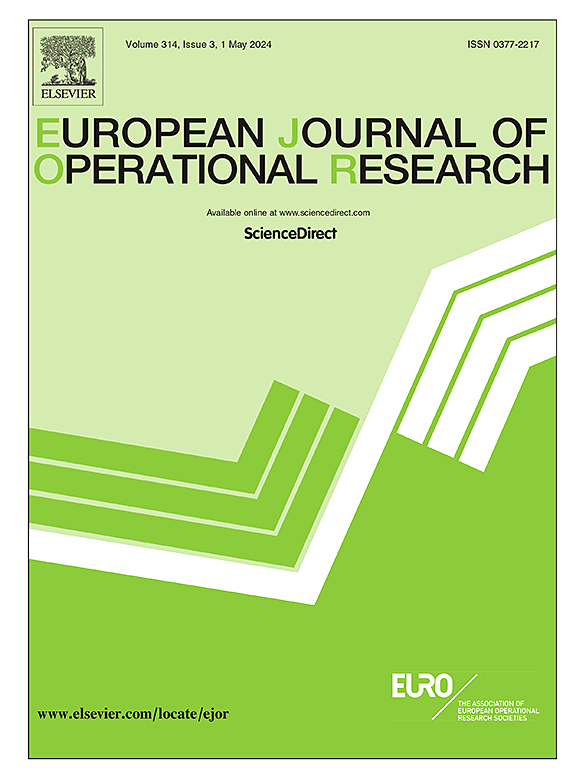设计和计算从附加价值模型推断的比较的解释
IF 6
2区 管理学
Q1 OPERATIONS RESEARCH & MANAGEMENT SCIENCE
引用次数: 0
摘要
许多决策模型都是基于偏好的加法表示。从这种附加决策模型中获得的建议有时被认为是不言而喻的。相反,我们认为这些建议应该得到解释,以便用户/决策者充分理解,并培养他们的信任。我们建议通过将偏好语句分解为更简单的语句来解释偏好语句x优于y。支持x的参数(赞成)和支持y的参数(反对)使用覆盖方案进行分解,其中每个赞成都由赞成覆盖。我们使用一种分解语言,其中基本的自明陈述涉及(i)一个亲对一个反,(ii)一个亲对几个反,或(iii)几个亲对一个反。我们证明在(ii)和(iii)情况下计算这些解释在计算上是困难的,并提出一个数学规划公式来解决它。数值实验提供了我们的算法的实际行为的见解。我们还说明了我们的方法在多标准决策辅助和机器学习方法的背景下的实用性。本文章由计算机程序翻译,如有差异,请以英文原文为准。
Designing and computing explanations for comparisons inferred from an additive value model
Many decision models are based on an additive representation of preferences. Recommendations obtained from such additive decision models are sometimes considered as self-evident. On the contrary, we claim that these recommendations deserve an explanation so as to be fully understood by the user/decision-maker and to foster her trust. We propose to explain a preference statement x y x y covering scheme in which each Con is covered by a Pro. We use a decomposition language in which elementary self-evident statements involve (i ) one Pro against one Con, (ii ) one pro against several Cons, or (iii ) several Pros against one Con. We prove that computing such explanations is computationally difficult in case (ii ) and (iii ), and propose a mathematical programming formulation to solve it. Numerical experiments provide insights on the actual behavior of our algorithm. We also illustrate the usefulness of our approach in the context of multicriteria decision aid but also for machine learning approaches.
求助全文
通过发布文献求助,成功后即可免费获取论文全文。
去求助
来源期刊

European Journal of Operational Research
管理科学-运筹学与管理科学
CiteScore
11.90
自引率
9.40%
发文量
786
审稿时长
8.2 months
期刊介绍:
The European Journal of Operational Research (EJOR) publishes high quality, original papers that contribute to the methodology of operational research (OR) and to the practice of decision making.
 求助内容:
求助内容: 应助结果提醒方式:
应助结果提醒方式:


